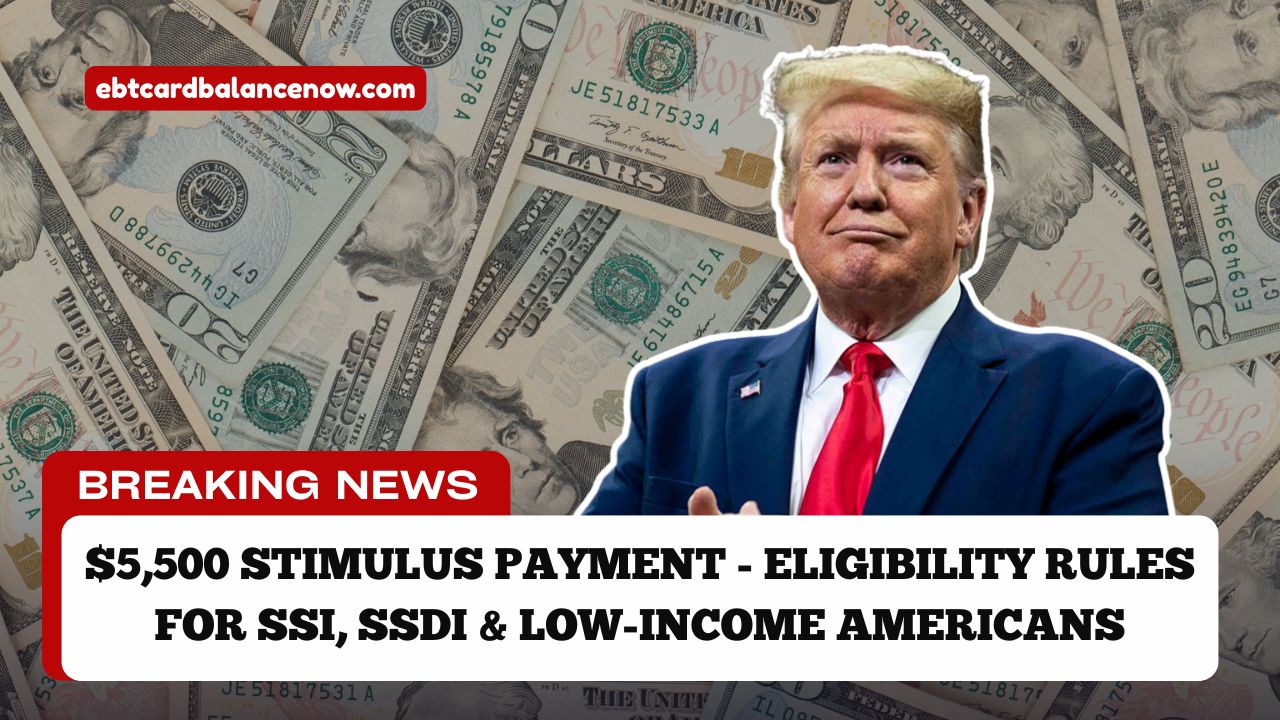The U.S. government has confirmed a new $5,500 stimulus payment in 2025, aimed at supporting SSI, SSDI, and low-income households struggling with inflation and rising living expenses.
Unlike earlier broad stimulus efforts, this payment is highly targeted, ensuring that seniors, disabled individuals, and families with limited incomes receive crucial financial relief.
With the cost of housing, healthcare, and food continuing to rise, the program is expected to provide much-needed support to millions of Americans this fall.
Who Qualifies for the $5,500 Stimulus Payment?
Eligibility for the 2025 stimulus program has been carefully defined to reach the most vulnerable groups. The requirements include:
- Supplemental Security Income (SSI) Recipients: Those receiving SSI due to age, disability, or blindness automatically qualify.
- Social Security Disability Insurance (SSDI) Beneficiaries: Individuals on SSDI who fall within the income limits are eligible.
- Low-Income Households: Single filers must earn less than $75,000 annually, heads of household must be below $112,500, and married couples filing jointly must have incomes under $150,000.
- Residency Status: Must be a U.S. citizen or legal resident with a valid Social Security number.
Families with dependent children may receive additional credits once the final distribution rules are confirmed.
Payment Timeline and Distribution Methods
The government expects payments to be distributed between September and November 2025. The timeline follows established patterns used in Social Security and IRS relief programs:
- Direct Deposit: Recipients with banking details on file with the IRS or SSA will get their payments first.
- Paper Checks & Debit Cards: Those without direct deposit will receive checks or government-issued prepaid debit cards, which may take 2–4 weeks longer.
Distribution Schedule Based on Benefit Type
| Group | Payment Date (2025) |
|---|---|
| Supplemental Security Income (SSI) | September 1, 2025 |
| SSDI Recipients | Based on normal SSA schedule (Wed. 2nd–4th week) |
| Other Low-Income Households | Mid to late September 2025 |
This staggered schedule ensures efficient distribution while avoiding system overloads.
How to Ensure You Receive the Payment
Most recipients will not need to apply separately, but they should take steps to avoid delays:
- File your 2024 tax return, even if you owe no taxes, to establish eligibility.
- Verify your direct deposit information with the IRS or SSA.
- Update your mailing address if you expect a paper check.
- Stay alert to official government notices and avoid scams promising “early access.”
Important Notes About the $5,500 Stimulus
This program is a one-time payment, not a recurring benefit. While it provides immediate relief, recipients must plan carefully to make the most of these funds.
The IRS has also clarified that these payments are considered taxable income at the federal level, although they may not be taxed by individual states.
For seniors and disabled individuals, the $5,500 boost could cover several months of essential expenses, including rent, groceries, medical supplies, or utility bills.
The $5,500 stimulus payment in 2025 provides critical relief to seniors, disabled individuals, and struggling households across the country.
With payments scheduled to begin in September 2025, recipients should update their records with the IRS and SSA to avoid delays.
While this is a one-time benefit, it represents an important financial cushion for millions of Americans navigating inflation and rising costs.
FAQs
Will SSI and SSDI recipients automatically get the $5,500 payment?
Yes. If you already receive SSI or SSDI benefits, you will automatically qualify without filing additional paperwork.
Can low-income workers qualify even if they don’t receive Social Security?
Yes. As long as their income falls under the defined thresholds, they may be eligible for the payment.
When will the payments be deposited?
Payments are expected between September and November 2025, with SSI recipients beginning on September 1, 2025.
